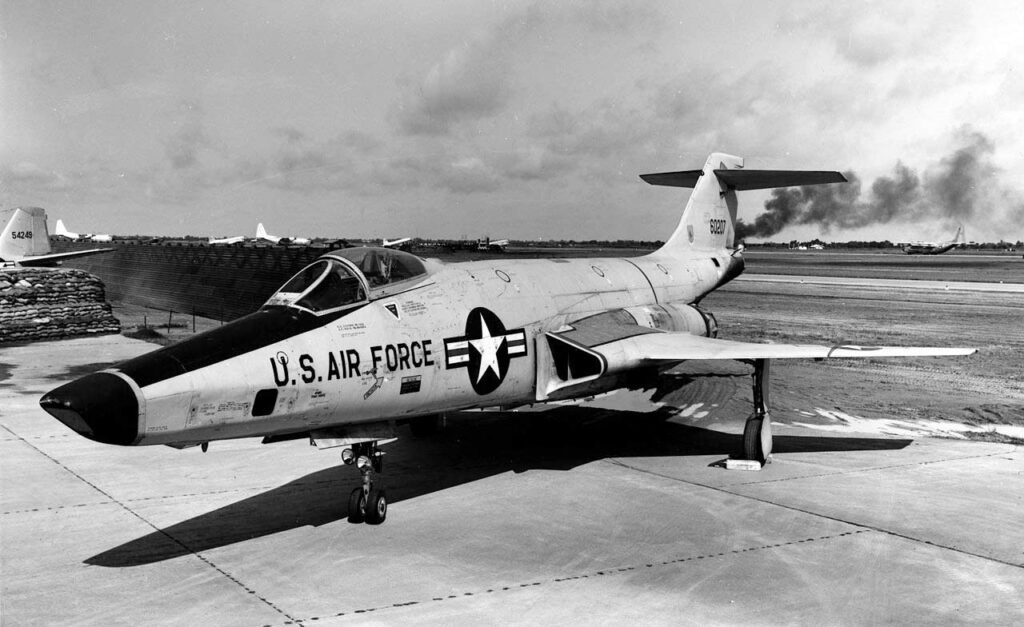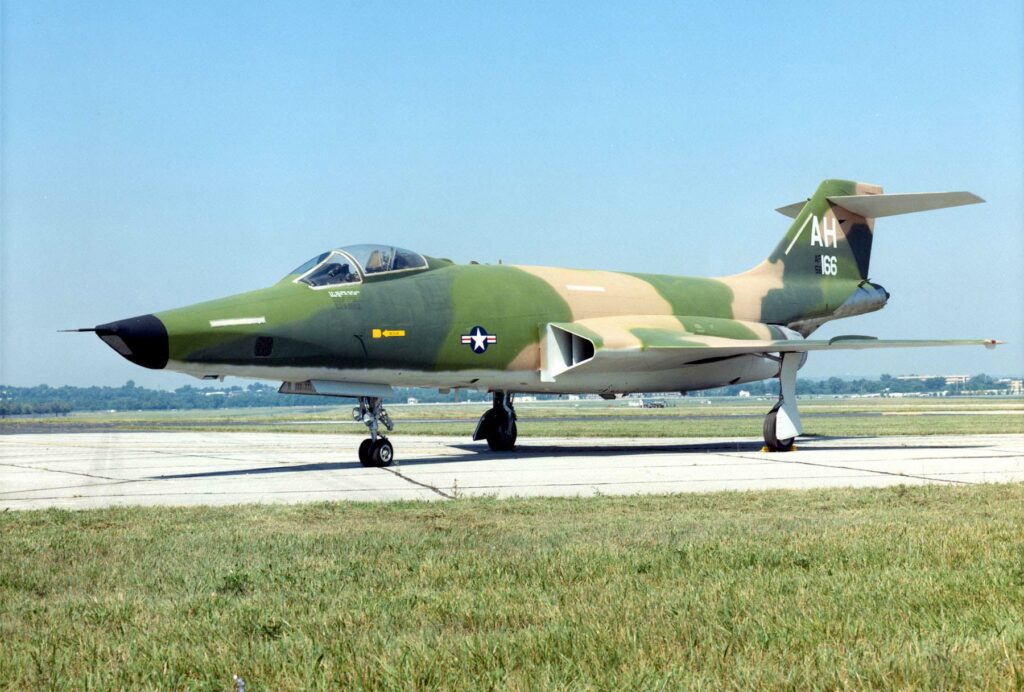The RF-101 Voodoo, a high-speed US reconnaissance aircraft, marked a significant advance in aerial photography during the Cold War era.
Technical Summary
The McDonnell RF-101 Voodoo was the reconnaissance variant of the F-101 Voodoo series, designed for high-speed, high-altitude photo reconnaissance missions. Capable of Mach 2 speeds, it featured advanced cameras and sensors for strategic surveillance. With its robust design and powerful Pratt & Whitney J57 engines, it served as a critical asset for the United States Air Force (USAF) during pivotal moments of the Cold War, including the Cuban Missile Crisis. Its operational flexibility and speed made it one of the premier reconnaissance aircraft of its time.
The McDonnell RF-101 Voodoo represented a significant leap forward in the field of aerial reconnaissance. As the first supersonic reconnaissance aircraft in the USAF, it played a crucial role in gathering intelligence during the Cold War.

History of the Development of the McDonnell RF-101 Voodoo
Developed in the early 1950s, the RF-101 was born out of the need for a high-speed, high-altitude reconnaissance aircraft to replace slower, more vulnerable predecessors. The USAF, recognizing the potential of the F-101 Voodoo fighter for adaptation to a reconnaissance role, initiated the development of the RF-101. This variant incorporated significant modifications to accommodate cameras and reconnaissance equipment, emphasizing speed and operational ceiling to evade enemy defenses. It first flew in 1955, quickly proving its worth as a strategic reconnaissance tool.
The development of the RF-101 was indicative of the era’s technological and strategic demands. The Cold War necessitated rapid advancements in surveillance capabilities, with high-value targets often deep within hostile territory. The RF-101 met these challenges head-on, providing the USAF with unprecedented reconnaissance capabilities.
Design of the McDonnell RF-101 Voodoo
The RF-101 featured a unique design tailored to its reconnaissance mission. It retained the basic airframe of the F-101 but included modifications such as a longer nose to house cameras and sensors. The aircraft was equipped with six cameras positioned in its nose and fuselage, capable of high-resolution photography at high speeds and altitudes.
Measuring 67 feet 5 inches (20.55 meters) in length with a wingspan of 39 feet 8 inches (12.09 meters), the RF-101 was powered by two Pratt & Whitney J57 turbojet engines, enabling speeds in excess of Mach 2. Its design prioritized speed and altitude, with a service ceiling above 50,000 feet (15,240 meters), to outpace threats and ensure the safety of its missions.
While its speed was a significant advantage, the RF-101’s design also had drawbacks. Its focus on speed and altitude compromised maneuverability and operational flexibility in lower-threat environments, limiting its role to strategic reconnaissance.
Performance of the McDonnell RF-101 Voodoo
The RF-101’s performance was exceptional for its time. Capable of reaching speeds of over Mach 2, it had a range of 2,000 miles (3,219 kilometers) with aerial refueling. Its Pratt & Whitney J57-P-55 engines provided a thrust of 16,900 pounds-force (75.2 kN) with afterburner, facilitating quick ingress and egress from high-threat areas.
When compared to contemporaries like the U-2 spy plane, the RF-101 offered a different operational paradigm. Unlike the high-flying U-2, the Voodoo could perform low-level, high-speed dashes into enemy territory, offering a complementary capability in the USAF’s reconnaissance arsenal.
Variants of the McDonnell RF-101 Voodoo
The RF-101 Voodoo had several variants, including the RF-101A and RF-101C. The RF-101A was the initial production version, while the RF-101C was designed with reinforced airframes and improved engines to handle the stresses of low-level, high-speed flight. Each variant was optimized for specific reconnaissance missions, with adjustments in camera equipment and avionics to suit operational needs.

Military Use and Combat of the McDonnell RF-101 Voodoo
The RF-101’s military use was marked by key contributions to Cold War reconnaissance efforts. It saw extensive service during the Cuban Missile Crisis, providing vital intelligence on Soviet missile installations. Its operations extended to conflicts such as the Vietnam War, where it conducted overflights to gather intelligence on enemy movements and positions.
Despite facing more advanced air defenses and the emergence of surface-to-air missiles, the RF-101 performed admirably. Its speed and high-altitude capabilities allowed it to complete missions where slower aircraft would have been vulnerable.
The aircraft was eventually replaced by more advanced reconnaissance platforms, such as the SR-71 Blackbird, which offered higher speeds, greater altitudes, and advanced stealth characteristics. The RF-101 was phased out of USAF service by the 1970s, but its legacy as a pioneer in aerial reconnaissance endures.
The McDonnell RF-101 Voodoo was a cornerstone of Cold War aerial reconnaissance, setting standards for speed, altitude, and photographic capability. Its development and service exemplified the technological and strategic evolution of the era, providing critical intelligence that shaped military and political outcomes. Despite its eventual replacement by more advanced aircraft, the RF-101’s contributions to the field of reconnaissance and its role in historical events remain significant achievements in aviation history.
Back to the Spy Planes section.